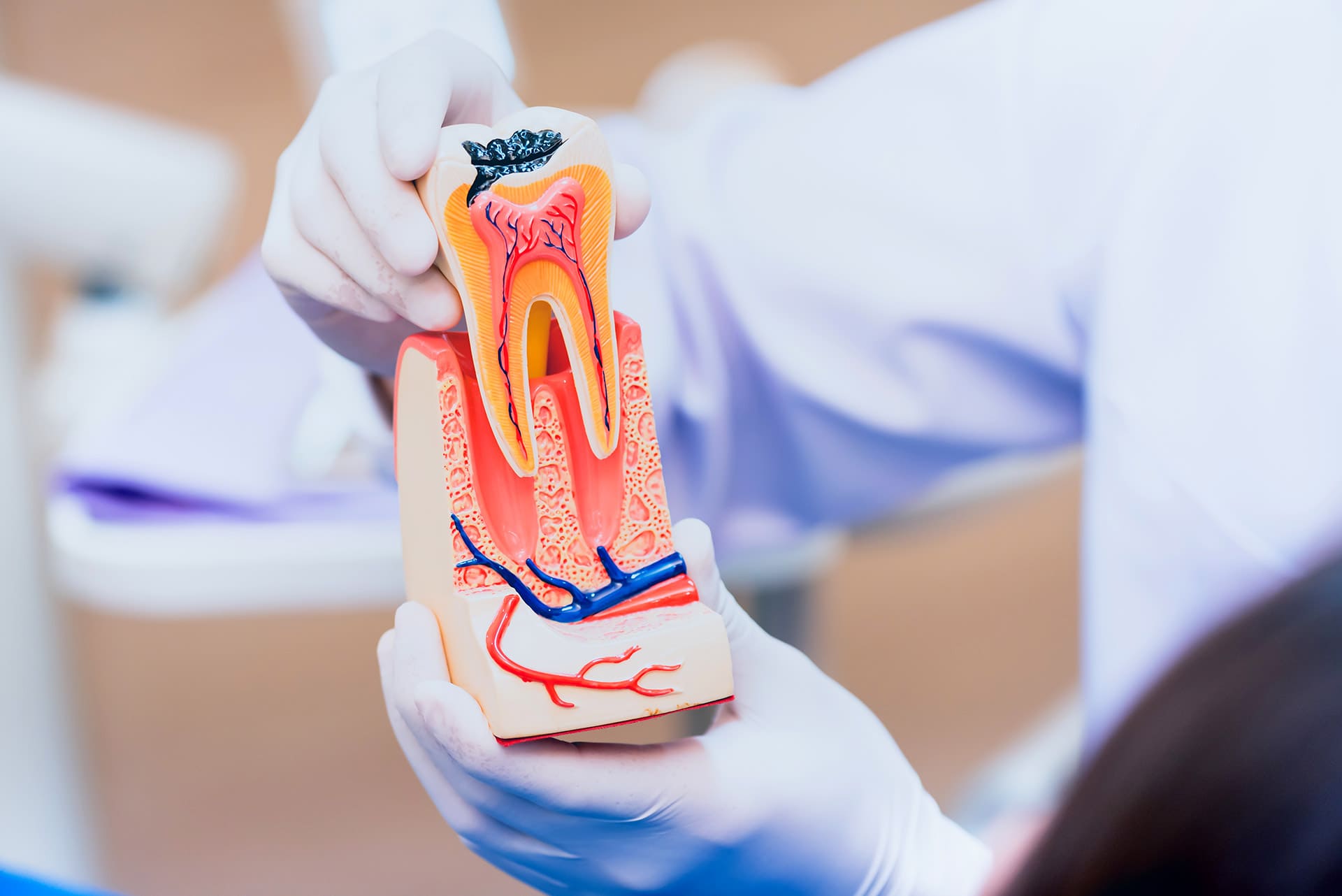What is Root Canal Treatment?
Root canal treatment is a dental procedure that involves cleaning, shaping, disinfecting, and filling the infected or damaged portion of the canal system inside a tooth. This process typically includes the removal of infected or inflamed tissues from the root canals of a tooth, followed by the filling of the cleaned canals with a suitable filling material.

Root canal treatment is employed when the nerve tissue inside a tooth is damaged, often due to tooth decay, fractures, trauma, or other factors. These adverse conditions can lead to toothache, infection, abscess, and even the potential loss of the tooth. Root canal treatment is a therapeutic method performed to address these issues, aiming to alleviate pain, resolve infections, and preserve the affected tooth.
Root canal treatment is typically administered by a dentist or endodontist. The procedure generally involves two or three stages and is conducted under local anesthesia. In the initial stage, the canal system inside the tooth is opened, and infected tissues are removed. Subsequently, in the second stage, the canal system is shaped and disinfected. The final stage entails filling the canals, and a protective filling is applied to the top of the tooth.
Index

In which cases is Root Canal Treatment necessary?
Root canal treatment is usually applied in cases where the nerve tissue inside a tooth is damaged.
These may include:
Various factors can lead to damage of the nerve tissue inside a tooth, necessitating root canal treatment. These factors include:
Deep Decay: Advanced decay that penetrates deep into the tooth can affect the nerve tissue.
Tooth Fractures: Fractures in the tooth can expose or harm the nerve tissue.
Trauma: Injuries or trauma to the tooth can damage the nerve tissue, resulting in pain and sensitivity.
Gum Diseases: Infections from gum diseases can extend to the teeth below the gum line, potentially affecting the nerve tissue.
Multiple Fillings: Repeated dental fillings can lead to damage of the nerve tissue within the tooth.
Teeth Whitening Procedures: Certain teeth whitening procedures may cause damage to the nerve tissue, leading to pain.
Root canal treatment is a beneficial procedure aimed at preserving the tooth, alleviating pain, and addressing symptoms caused by various conditions such as deep decay, fractures, trauma, gum diseases, multiple fillings, or teeth whitening procedures. However, in certain situations, tooth extraction may be necessary. The decision between root canal treatment and extraction is typically determined by a dentist or endodontist after a thorough evaluation of the tooth’s condition. They assess factors such as the extent of damage, the feasibility of saving the tooth, and the overall oral health of the patient to determine the most appropriate course of treatment.
How Is Root Canal Treatment Done?
Root canal treatment is generally performed in three stages.
First Stage: Opening the tooth and cleaning the canal system
In the initial stage, a section of the tooth is removed to gain access to the interior. Subsequently, the root canals containing infected or damaged nerve tissue are opened, and a file is used to remove the infected tissue. Following the cleaning of the canals, they are disinfected using an antiseptic solution.
Second Stage: Shaping and filling the canals
The second stage involves shaping the canals and placing a filling material to replace the deceased nerve tissue. This process includes molding the canals and filling them with the appropriate material. A permanent filling is then applied to seal the tooth.
Third Stage: Protecting the tooth
In the third stage, the treated tooth is covered. While the treated tooth can function like a normal tooth, it is advisable to protect it with a covering. If there is substantial loss of tooth material, the dentist may recommend a dental crown or veneer.

Root canal treatment is generally completed over a few visits. The procedure is typically performed under local anesthesia to ensure you don’t feel any pain during the process. However, it’s common to experience mild pain or sensitivity for a few days following the procedure. This is a normal part of the healing process and can often be alleviated with the use of pain relievers.